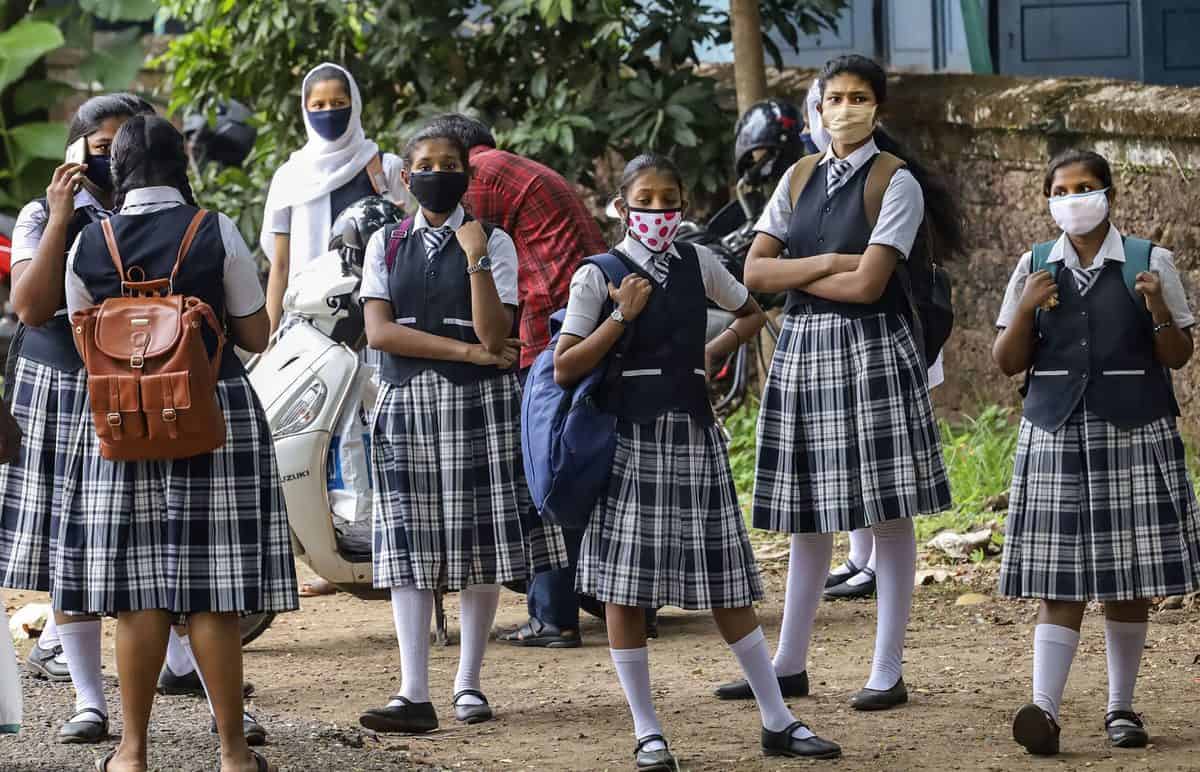Amir Ullah Khan and Netheena Mathews
The Indian government has reportedly framed plans for a phased re-opening of schools between September 1 and November 14, they are most likely to leave the final decision to state governments. The broad operating guidelines for school re-opening are expected to be notified as part of the last set of ‘Unlock’ rules. Several states like Assam, Andhra Pradesh, West Bengal and Goa are said to be considering re-opening of schools in September itself. According to a survey conducted by Local Circles, only 33% parents said they were comfortable with sending their wards to school in September. While online classes are not a good enough substitute, especially in light of the digital divide that exists in the country, only one in three Indian schools have basic access to handwashing and sanitation necessities in schools, a recent UNICEF-WHO has said.
Can children contract and transmit COVID-19?
Most studies conducted in the light of the 2009 H1N1 Influenza pandemic indicate children play a significant role in spreading respiratory illnesses. While they may exhibit milder symptoms, children still run the risk of infecting senior citizens at home and spreading the virus among each other. Several experts feel the benefits of schools remaining closed may outweigh re-opening themuntil a vaccine is in sight; at least as far as its effects on the entire population are concerned.
This puts children at increased risk of contracting COVID-19 in schools. If rural schools see disease outbreaks, nearby healthcare facilities may not have the resources to deal with a sudden spike in COVID-19 hospitalisations. However, the nutritional needs of a staggering 115 million Indian children faced uncertainty as the lockdown affected the world’s largest meal programme – India’s mid-day meal scheme in schools.
How school closures have affected children
The COVID-19 pandemic has posed the largest interruptionto an entire generation’s education with over 1.6 billion children in more than 190 countries affected by school closures at the peak of the lockdown, UNICEF has said. Loss of in-person instruction is projected to result in significant learning deficits, especially across countries with low education gains. Peer interactions are also vital for a child’s overall development.Child abuse, early marriages, child labour and other forms of exploitation have also been on the rise. Those living in countries affected by instability and crises, migrants, refugees, minorities, children living with disabilities, and children in institutions are worst-hit by school closures. Moreover, a large number of children in developing countries are dependent on their school meal programmes for their nutritional and immunization needs.
Schools reopening around the world
Emboldened by its early victory in combating the disease, Israel was one among the first countries in the world to re-open schools with social distancing norms and mask mandates in place. This turned disastrous soon enough during a record heatwave that made masks uncomfortable in Jerusalem’s already-cramped classes. Schools turned into epicentres of transmission of the disease. Meanwhile, in the United States, where President Donald Trump has repeatedly called for re-opening of schools on false claims that children are immune to the virus, over 97,000 kids tested positive in the last two weeks of July alone. Kenya has delayed re-opening of schools until 2021 with students expected to repeat the year, a decision that is feared to deepen educational inequality.
In Sweden, schools did not close, and parents were even threatened with punishments for keeping their wards out of classrooms. Masks and social distancing norms were not mandatory but students above 16 years had their classes go online. Until the end of the academic year, Sweden had not reported a significant rise in cases among children when compared to neighbouring Finland that kept schools closed throughout this period. The success of this model can’t be gauged as a lack of sufficient data has prevented studies into how in-person classrooms impacted transmission of the disease among teachers and family members of the school-goers. Denmark and Norway re-opened schools in April in a phase-wise manner until the school year-end. Classes for the new academic year begin this week as cases see a spike in these countries.
Uruguay’s ‘staged approach’ deserves praise. The country targeted bringing children from remote areas and other vulnerable groups who had difficulty accessing online classes to school first. Since rural schools had fewer students, social distancing norms were easier to maintain. This was then followed by resumed in-person instruction for high school seniors, students in non-urban areas, and finally students in the capital city’s schools. Students are asked to attend in-person and online classes in alternating batches to keep their physical numbers low in classrooms. China, Japan, South Korea and Vietnam have all made daily temperature checks, hand-washing, physical distancing, sanitisation and mask-wearingstrict norms in schools. Closer home, Sri Lanka has just re-opened its schools with the island country reporting zero community transmission cases since April 30.
Way ahead
Besides mandating mask-wearing, daily temperature checks, physical distancing and reduced strength for in-person instruction in schools, mitigation efforts taken during the pandemic must include provision of access to basic sanitation facilities like soap, water, clean toilets and drinking water. The needs of students with disabilities must also be given special attention in this regard. More than 43% schools and 818 million students around the world lacked access to basic handwashing necessities like soap and water in 2019. The government must invest in construction of wash basins and toilets, as well as provision of thermal scanners, hand sanitisers and soap in schools.To prevent school students from being exposed to repeated Covid-19 waves, the government must ensure that civic authorities and health workers are working in earnest for large-scale testing of symptomatic individuals, contact-tracing, and continued isolation and treatment of diagnosed individuals.
Amir Ullah Khan and Netheena Mathews are researchers at the Centre for Development Policy and Practice, Hyderabad.

